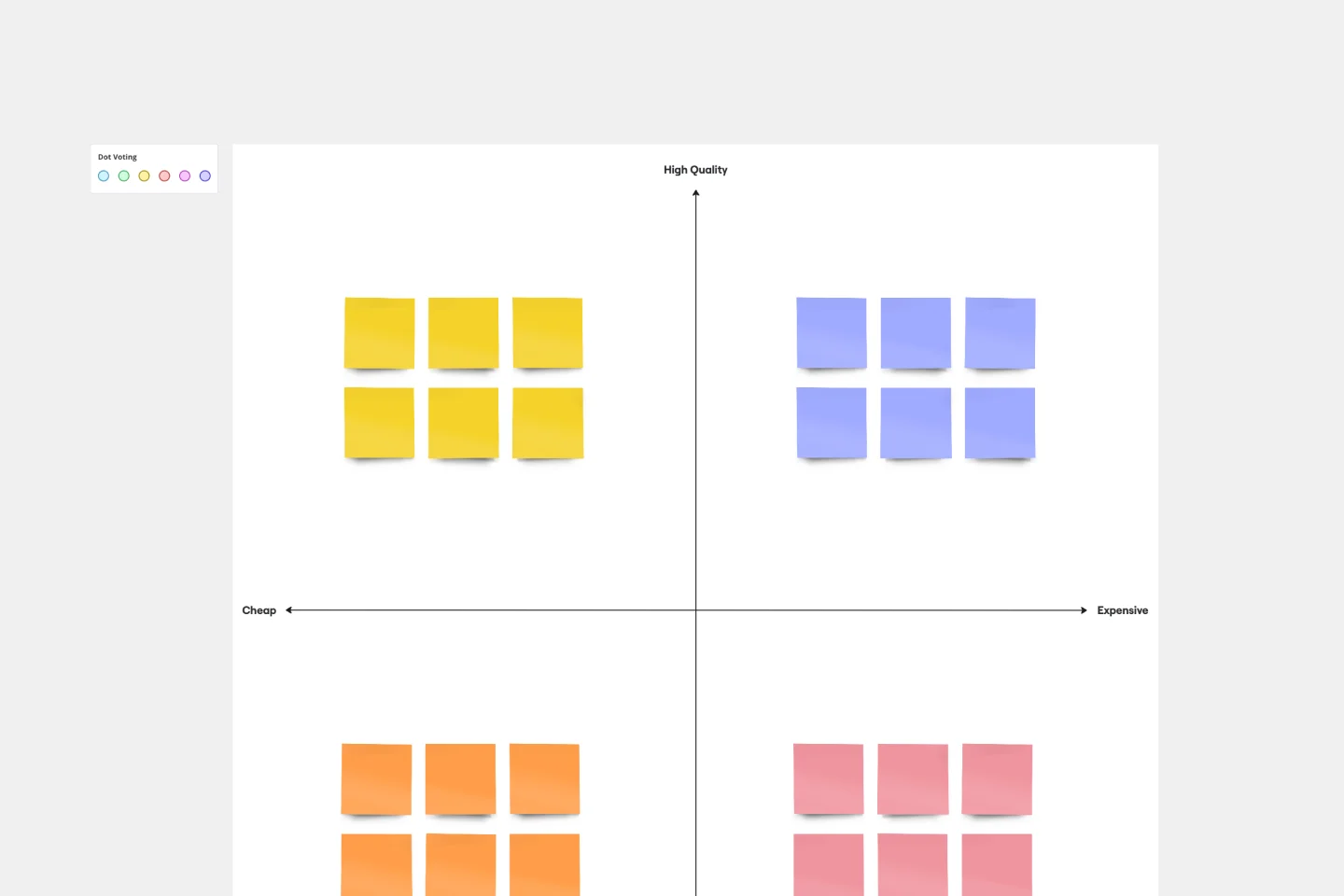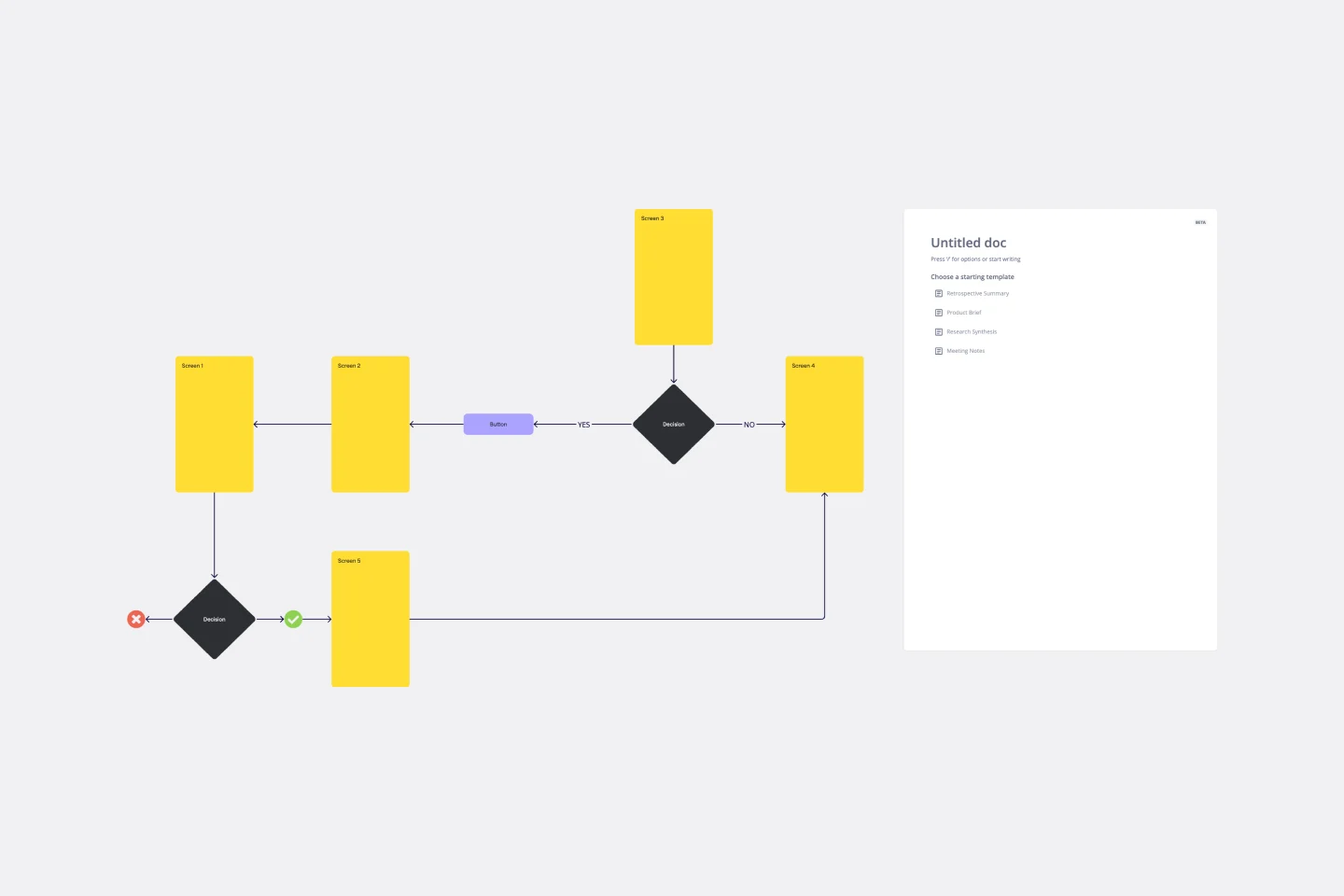About the Voice of Customer Template
A voice of the customer (also known as a “voice of the customer translation matrix”) helps you learn more about what your customers think about and feel for your products, services, or business.
A voice of customer research initiative can help shape your buyer personas and customer journey map.
Customer research can help you go beyond number-based measures like profits or traffic and probe your ideal buyer’s desires and feelings. Did you meet their expectations? Will they become a repeat buyer? What can you improve on for the next time they interact with your business?
For teams new to voice of the customer, it’s worth thinking long-term. Customer-centric company culture is an iterative commitment that happens over many years, where practices are refined, data analysis becomes more complex, and taking action is an organization-wide situation.
What is a Voice of the Customer
Voice of the Customer (VoC) describes the feedback customers give businesses about their experience and expectations with your product or service. As a customer-centric framework, it helps you figure out who your customers are, their needs, expectations, understandings, and how you can improve your products and services for them.
When businesses hone in on their customers’ needs and preferences, they can deliver targeted (and successful) experiences every time.
Also known as a customer translation matrix, a voice of the customer framework will typically reveal ...
Verbatim or customer comments: what are customers saying, in their own language?
Customer needs or issues: what do customers say they need?
Customer requirements: what do customers need to fulfill their requests successfully?
When businesses and brands become familiar with their customers’ needs, it becomes easier to navigate the complexity of brand perception, marketing interactions, managing negative feedback, and product development. The customer feedback collected in each framework can help deliver successful personalized experiences repeatedly.
When to use the Voice of the Customer Template
A Voice of the Customer framework can be useful for UX researchers who need to ...
Quantify customer feedback: You can rate the insights by importance or how likely it is to best serve the end-user.
Verify customer feedback: You can rate the insights by importance or how likely it is to best serve the end-user.
Launch new strategies: You can use insights to inform new product designs or price-setting strategies.
Keep up with industry or behavioral trends: Weighing up how to offer customers meaningful connections and maintain profitability can help you make sure your product or service offering matches up against competitors.
Voice of the Customer can also help UX researchers rally leadership and teammates around:
Understanding customer needs
Making customer-aligned business decisions
Finding market-fit and timing product launches accordingly
Improving brand reputation
Increasing customer retention over time
Finding new ways to transform negative feedback or customer experience into positives
You can also translate the customer insights found in your Voice of Customer to a tree diagram, such as an Opportunity Solution Tree to give the data more context.
Create your own Voice of the Customer framework
Conducting your own Voice of the Customer research is made easier using Miro’s virtual collaboration platform. It is the perfect canvas to create and share your VoC framework. Get started by selecting the Voice of the Customer Template, then take the following steps.
Collect your customer feedback from relevant primary resources. Revisit customer surveys, product reviews, or website analytics to pinpoint how your customers talk about your products and services in their own words. You can also import survey results directly onto a digital board in Miro using forms and survey integrations.
Add your customer feedback to the Voice of Customer grid. Add one insight or piece of feedback per sticky note. “Verbatim” and “Need” can be expressed in one sentence. Turn requirements into one-word insights. Want to develop this into a workshop session for your team? You can type “http://workshop.new/” into the URL section of your Miro browser to set-up a collaborative board.
Analyze your customer feedback as data. As a team, figure out if you can connect the insights to customer profiles such as buyer personas. See if you can also identify patterns or trends in language and sentiment.
Decide on next steps and actions with your team. How can you tweak and optimize your products and services to be more customer-centric? Is there anything that needs to be rebuilt completely? Adjust your product roadmap and any project management plans accordingly. You can link to related Miro Boards in this template for easier access and schedule a follow-up workshop session to discuss progress or obstacles as a team.
FAQ about the Voice of the Customer
What is meant by Voice of the Customer?
The Voice of the Customer (VoC) is a customer-centric framework that helps you figure out who your customers are, their needs, expectations, understandings, and how you can improve your products and services for them. The Voice of the Customer describes the feedback customers give businesses about their experience and expectations with your product or service.
Why is the Voice of the Customer important?
The Voice of the Customer VOC helps businesses better understand what their customers think and feel about their product or services. Having this crucial information allows businesses to hone in on customers’ needs and preferences so that adjustments can be made to product offerings or services. This will increase the chances for success and longevity.

Miro
Your virtual workspace for innovation
Miro is an innovation workspace designed for teams of every size, everywhere, to dream, design, and build the future together. Our mission? To empower these teams to create the next big thing, powered by AI at every step of the way. Over 90 million users around the world rely on Miro to untangle complex ideas, put customer needs first, and deliver products and services faster. All supported by best-in-class security, compliance, and scalability.
Categories
Similar templates
Perceptual Map Template

Perceptual Map Template
To shape your messaging, tailor your marketing, improve your product, and build your brand, you have to know your customers’ perceptions — what they think of you and your competitors. You can gain those insights by exploring a perceptual map. This simple, powerful tool creates a visual representation of how customers rank your price, performance, safety, and reliability. Put this template to work and you’ll be able to size up your competition, see gaps in the market, and understand changes in customer behavior and purchasing decisions.
Buyer Persona Template

Buyer Persona Template
You have an ideal customer: The group (or few groups) of people who will buy and love your product or service. But to reach that ideal customer, your entire team or company has to align on who that is. Buyer personas give you a simple but creative way to get that done. These semi-fictional representations of your current and potential customers can help you shape your product offering, weed out the “bad apples,” and tailor your marketing strategies for serious success.
User Flow Template

User Flow Template
User flows are diagrams that help UX and product teams map out the logical path a user should take when interacting with a system. As a visual tool, the user flow shows the relationship between a website or app’s functionality, potential actions a user could take, and the outcome of what the user decides to do. User flows help you understand what a user does to finish a task or complete a goal through your product or experience.
The Customer Question Board
Perceptual Map Template

Perceptual Map Template
To shape your messaging, tailor your marketing, improve your product, and build your brand, you have to know your customers’ perceptions — what they think of you and your competitors. You can gain those insights by exploring a perceptual map. This simple, powerful tool creates a visual representation of how customers rank your price, performance, safety, and reliability. Put this template to work and you’ll be able to size up your competition, see gaps in the market, and understand changes in customer behavior and purchasing decisions.
Buyer Persona Template

Buyer Persona Template
You have an ideal customer: The group (or few groups) of people who will buy and love your product or service. But to reach that ideal customer, your entire team or company has to align on who that is. Buyer personas give you a simple but creative way to get that done. These semi-fictional representations of your current and potential customers can help you shape your product offering, weed out the “bad apples,” and tailor your marketing strategies for serious success.
User Flow Template

User Flow Template
User flows are diagrams that help UX and product teams map out the logical path a user should take when interacting with a system. As a visual tool, the user flow shows the relationship between a website or app’s functionality, potential actions a user could take, and the outcome of what the user decides to do. User flows help you understand what a user does to finish a task or complete a goal through your product or experience.
